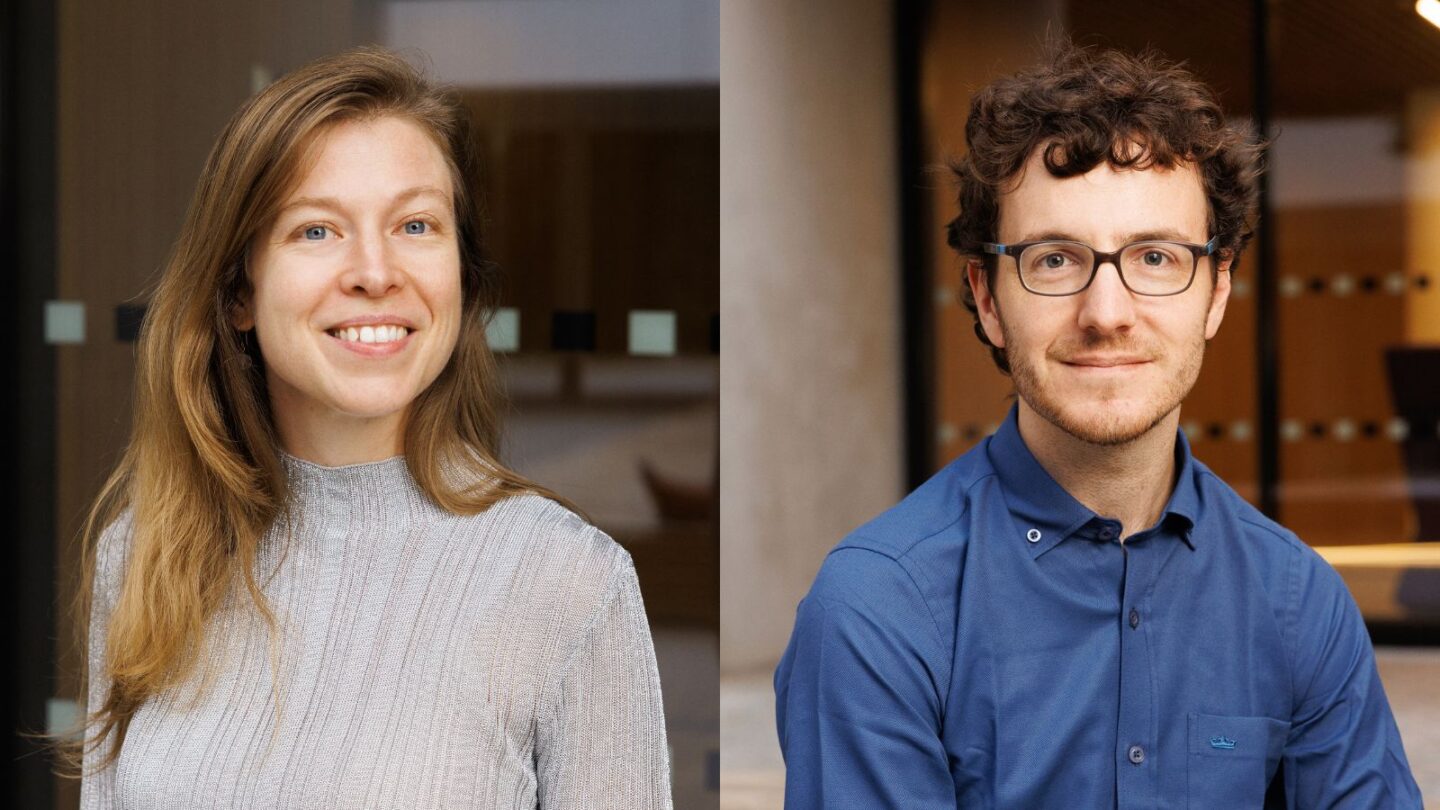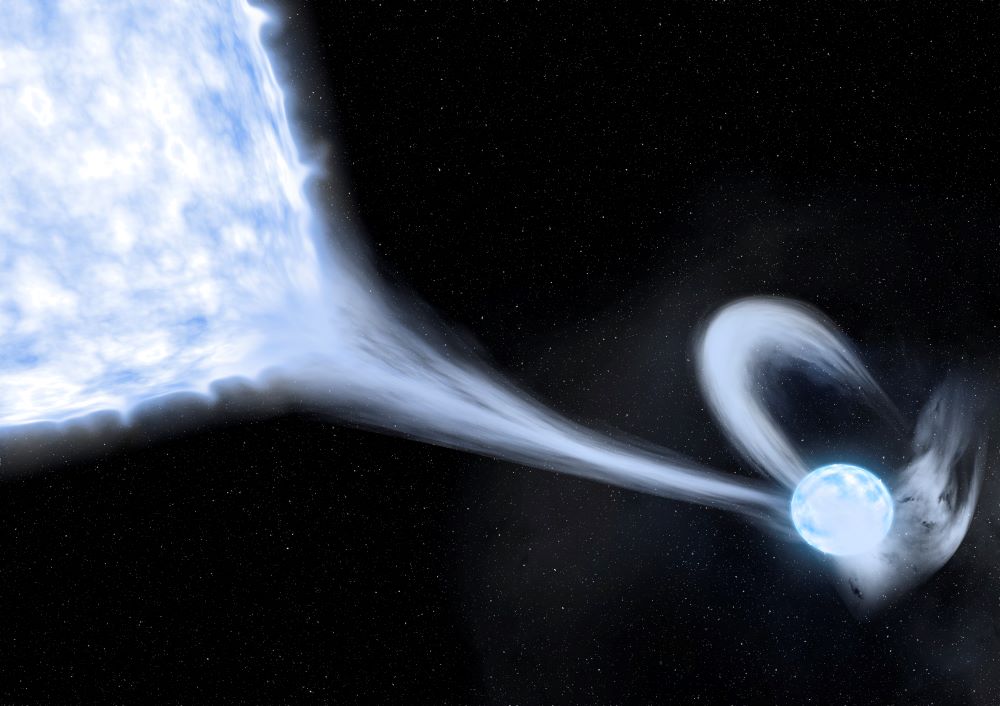October 12, 2023
Meet ISTA’s New Astrophysicists
ISTA’s New Assistant Professors
This fall, two new assistant professors joined the ranks of astrophysicists at the Institute of Science and Technology Austria (ISTA). Ylva Götberg and Jorryt Matthee joined scientists to help advance the frontiers of astronomy. This marks an exciting new chapter as they embark on their roles, bringing with them fresh perspectives and remarkable expertise.

Each of the scientists are bringing with them an ambition to collaborate and learn from others. They both find it incredibly beneficial to shift toward collaborative perspectives. This becomes evident as they venture beyond the scope of their astronomy studies, broadening their perspective outside the confines of their own astronomical sphere. This inclination to establish connections with varied research disciplines and explore diverse methodologies is of paramount importance in today’s fast-paced research field. And here at ISTA, it is possible to do just that.
Ylva Götberg
Before arriving at ISTA, Götberg was based at The Carnegie Observatories in Pasadena, California, as a NASA Hubble postdoctoral fellow. Götberg’s work focuses on interacting binary stars. Her expertise is in studying stars that have lost their hydrogen-rich envelopes as a result of interactions with a binary companion star. As their name indicates, binary stars are two stars that orbit around one another, much like how the Earth is moving around the Sun. As the stars evolve and swell, the outer layers of one star can start to feel a stronger gravitational pull to the companion than to itself, initiating a transfer of mass between the stars. When the mass transfer is complete, the stellar core is exposed. Since it is made out of helium, it is extremely hot, emitting most of its light in the ionizing regime.
With there being a large number of subfields within astronomy, Götberg reflects: “I focus on stars, but not staying just with the one individual star, also branching out. For example, what is the stars’ role in the galaxy? Or how did the radiation influence the medium between galaxies? How do they create gravitational waves? I come originally from just simulations and theory, but in the recent years, I have also gained experience in observational astronomy, using telescopes.”

Bringing people together through science
Drawing inspiration from interactions and working with people is something that Götberg credits very much to her success and ongoing passion. Really loving astronomy also helps. “Something that truly inspires me is when I can work with others. I think students come with so much energy when they are learning something new, making me feel so happy and proud that I can be a part of this journey with them. This gives me a boost in motivation driving me forward and helping me lead my own research group here at ISTA.” An additional ambition that pushes Götberg is connecting and working alongside those with different expertise and backgrounds. Götberg enjoys broadening her perspectives and drawing parallels with her own research. ISTA’s goal of bringing together diverse people in science is a particular aspect that she most looks forward to when joining the Institute. Götberg explains, “At ISTA you’re not just inside an astronomy department, but you can actually branch out even further with other scientists and fields, and I think that’s really exciting. I very much look forward to that because I think we could all benefit from learning from each other across the different research fields.”
Jorryt Matthee
Having previously undertaken postdoctoral research in extragalactic astrophysics at ETH Zürich, Matthee and his team are ready to dedicate their time at ISTA to delve further into the mysteries of galaxies in the early Universe. Matthee’s research is primarily concerned with observations of galaxies and their surroundings during the first 3 billion years of cosmic history, using large telescopes in Chile (such as the VLT and ALMA) and in space (including the JWST). He also utilizes cosmological hydrodynamical simulation to track the evolution of galaxies through time. With this technique, he aims to understand the relationship between dark matter-driven structure formation and galaxies’ growth rates, as well as their relation to chemical enrichment.
Driven by curiosity
Pondering on the origin of life’s building blocks, Matthee’s curiosity began at an early age. “Since childhood, I’ve been inspired by fundamental questions about our origins, our future and our place in the Universe. Where do we come from? How did the Earth and Sun form? Where did the building blocks of life originate? What will happen after our Sun dies? I realized that, ultimately, the most fundamental story of our origin is the story of the cosmos. This inspired me to eventually focus my studies on astronomy and galaxies.” This intrinsic curiosity has led him to research and dive deeper into understanding the cosmos. This pursuit, fueled by cutting-edge technology, becomes both a source of motivation and fulfillment.
Particularly, Matthee is looking forward to engaging with researchers from diverse disciplines, fostering an environment of cross-pollination of ideas and insights. Equally, he aspires to captivate the realm of astronomy research and its profound cosmic inquiries.
Thinking similarly to Götberg, Matthee explains: “I’m most looking forward to the opportunities that ISTA provides to build a research team focused on studies of galaxies in the early universe. I also look forward to playing a role in shaping the future of astronomy research at ISTA together with my colleagues and to connect with researchers in other disciplines in order to see what we can learn from each other, and to introduce students from a variety of backgrounds to astronomy research and the questions we ask about our universe.”

An exciting time for Astronomy at ISTA
Research in astronomy at ISTA has only taken off earlier in 2023, when Lisa Bugnet joined as ISTA’s very first assistant professor in astronomy, so there is indeed still a lot to shape. Götberg and Matthee will thus help consolidate the research of space, stars and everything in between at the Institute. As they embark on their new roles as assistant professors, they mark not only an exciting chapter in their own careers but also signaling a promising era for their respective research groups and the wider scientific community they engage with. As they join ISTA, they bring fresh perspectives and substantial expertise, enhancing ISTA’s standing in the field of astronomy.



